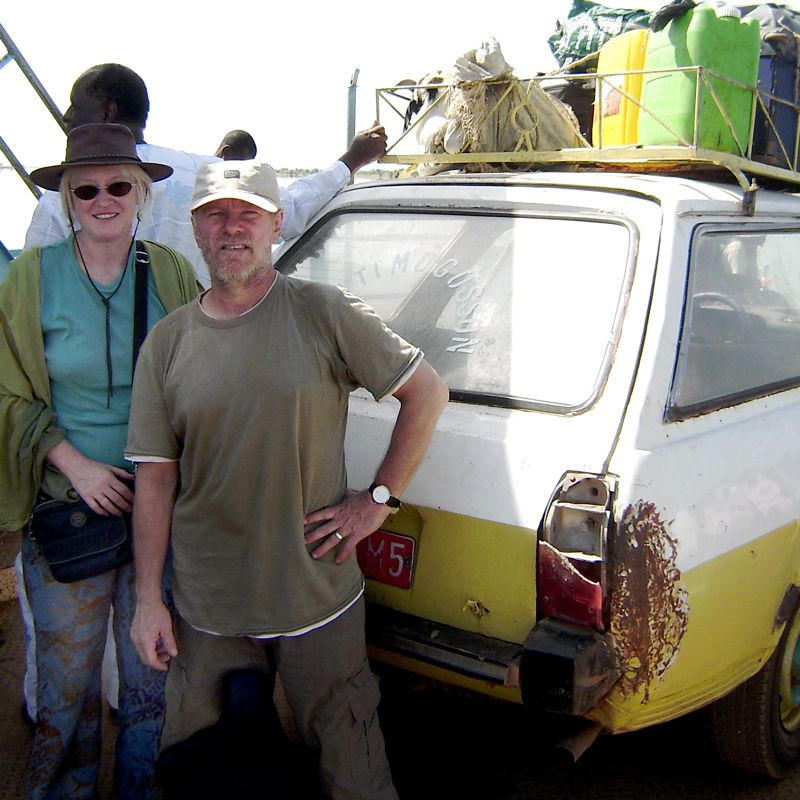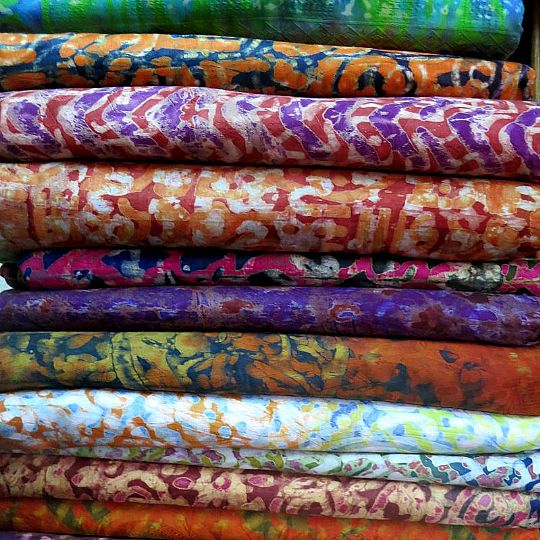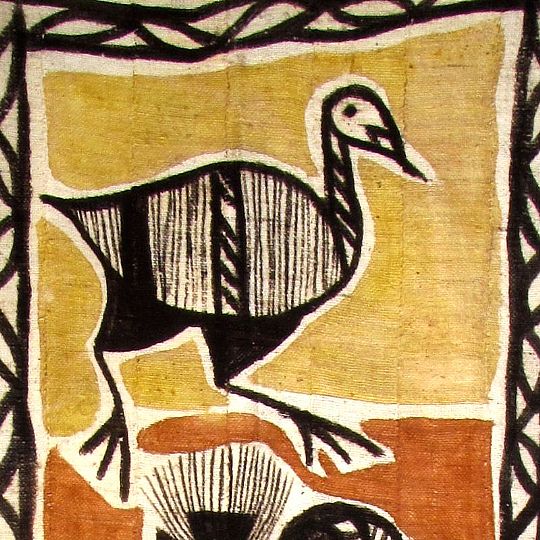On the road in Africa
You can find some real textile treasures in the markets of Africa.
We know, because we spend several weeks per year riding the buses, tro tros, gellie gellies and 'sept place' Peugot 504s up and down bumpy, rutted tracks in search of just those treasures.
We're the ones who get hot, dusty and thirsty. And we do mean thirsty!
All you have to do is put the kettle on and browse our website to see what we found.
Happy browsing. Enjoy!
 Magie Relph and Bob Irwin: ferry crossing, Djenne, Mali
Magie Relph and Bob Irwin: ferry crossing, Djenne, MaliAfrican Fabrics by the metre
Yes, we sell our African fabrics by the metre. But that's not all.
Like Magie, many of our customers are quilters. And what do quilters need more than anything else in life?
Why, Fat Quarters, of course. Which means our minimum order is a mere Fat Quarter.
Or you can buy a half metre, a metre or more, depending on stock available.
Unique & Decorative African Textiles
Many African textiles begin with the simplest technologies.
Take a drop spindle, then drive four posts into the ground to support the heddles of a basic loom.
Add a mortar for pounding leaves, bark and roots into natural dye stuffs.
Dig a pit in the ground and fill it with indigo.
From these timeless elements - used today as they always have been - African artisans are still producing the textiles that continue to say, 'We are Africans.'
- Fabrics & Textiles
- African Fabrics by the metre
- Special Collection African Fabrics
- Hand-dyed African Batiks
- Hand-dyed African Tie-dye
- African Wax Prints
- African Wax Print Indigos
- Langa Lapu South African Sun Prints
- Shwe Shwe Indigos
- Shwe Shwe Colours
- Kudhinda Zimbabwe Screen Prints
- Kola & Indigo Hand-dyes
- Indigo Hand-dyes
- Handwoven Strip Cloth
- Unique & Decorative African Textiles
- Mud Cloth / Bogolan
- Vintage & Collectable African Textiles
- Kuba Cloth
- Korhogo Cloths
- Indigo Cloths
- Undyed African Textiles
- Kenyan Kikoy
- Bark Cloth

